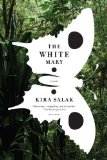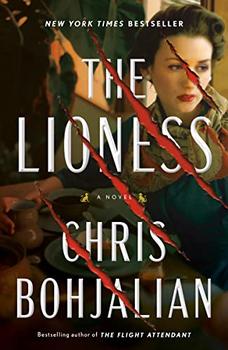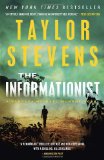Summary | Excerpt | Reading Guide | Reviews | Beyond the book | Read-Alikes | Genres & Themes | Author Bio

A Novel
by Kira SalakAs readers peruse The White Mary, they will find
themselves continually wondering where Kira Salak has drawn the line between
fact and fiction. Salak, a journalist who reported from war zones for many
years, used her travels in Papa New Guinea (PNG) as a basis for The White
Mary. In her introduction to the book, she writes, "Like Marika, I went
there alone. I journeyed through its remotest jungles in a dugout canoe, or
followed a native guide, hacking my way through the dim, tangled rainforest. I
met indigenous people who were so isolated that they had never seen a white
person before." Salak does a remarkable job of depicting those experiences
throughout The White Mary. Indeed, the jungle and its people are so
vividly described it's impossible to imagine they could have been written by
someone who hadn't experienced them.

"Tobo must admit that these Walwasi people are rather foolish and unknowledgeable about the most basic of things. For example, they believe that white people have green-colored blood from all the demons in them, and that white people leave their bodies each night to cause mischief. Tobo nearly laughed when he heard this. Everyone knows that a white person's blood is red – unless he is about to die, in which case it turns white, like his skin. And white people's spirits are so lost and confused that, even when they do leave their bodies at night, they can't do any damage."
The White Mary is not without its flaws. Some of the characters are flat.
Marika's US love interest in particular comes off as whiny and annoying. Most of
the scenes between the two are tedious and overfull of trite psycho-babble.
The book can also be a bit too preachy. Although not an endorsement of any
particular religion or deity, it has definite spiritual overtones. The
philosophy it espouses seems to come verbatim from the Alcoholic's Anonymous
handbook. Not that there's anything wrong with that - it's just not well
integrated. It's too intrusive and heavy-handed.
Finally, Salak makes some stylistic decisions that initially come across as
awkward, choosing to differentiate the PNG scenes from those occurring elsewhere
by a change in tense. Events taking place in the US are relayed in the past
tense, while those in PNG are related in the present. This writing technique
feels stilted and unnatural when applied to the jungle scenes, particularly when
relating characters' thoughts ("Marika thinks that…" "Tobo wonders if…").
Fortunately, the plot is so involving that the reader is willing to overlook the
book's weaknesses.
The White Mary is a great adventure story, and is certainly a
page-turner. It will not be for everyone. Marika and the missing Robert Lewis
were both war correspondents, and Salak pulls no punches when describing what
these reporters witnessed and experienced. People who are bothered by graphic
descriptions of brutality should probably give this novel a pass. Most fans of
the genre, however, will want to put this one on their list.
First Impressions
Seventeen BookBrowse members reviewed this book. Read their comments
here.
![]() This review was originally published in The BookBrowse Review in August 2008, and has been updated for the
October 2009 edition.
Click here to go to this issue.
This review was originally published in The BookBrowse Review in August 2008, and has been updated for the
October 2009 edition.
Click here to go to this issue.

If you liked The White Mary, try these:

by Chris Bohjalian
Published 2023
A luxurious African safari turns deadly for a Hollywood starlet and her entourage in this riveting historical thriller from the New York Times bestselling author of The Flight Attendant.

by Taylor Stevens
Published 2011
Gripping, ingenious, and impeccably paced, The Informationist marks the arrival or a thrilling new talent.
Dictators ride to and fro on tigers from which they dare not dismount. And the tigers are getting hungry.
Click Here to find out who said this, as well as discovering other famous literary quotes!
Your guide toexceptional books
BookBrowse seeks out and recommends the best in contemporary fiction and nonfiction—books that not only engage and entertain but also deepen our understanding of ourselves and the world around us.